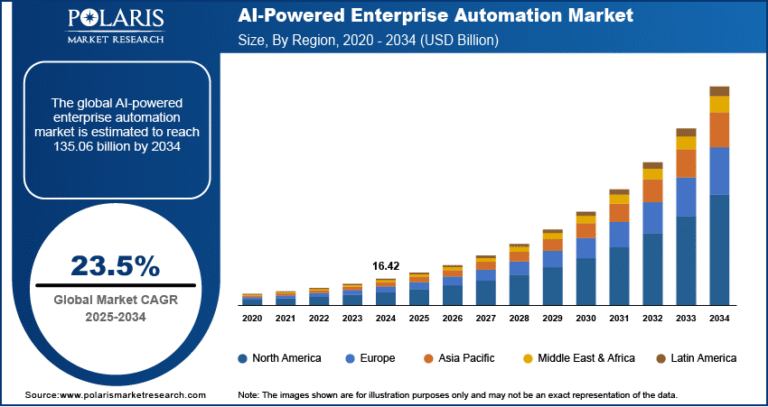AI in Gaming Market Size, Share & Trends Analysis growing at a CAGR of 36.1% from 2025 to 2033

The global AI in gaming market size was estimated at USD 3,280.9 million in 2024 and is projected to reach USD 51,259.3 million by 2033, growing at a CAGR of 36.1% from 2025 to 2033. The market growth is anticipated to be accelerated by growing use of the AI- technologies in gaming industry and advancements in deep learning technologies, which improve the visuals, performance, and allow users for personalized and adaptive gameplay, hence, expanding the gaming platforms in the industry.
Key Market Trends & Insights
- North America dominated the global AI in gaming market with the largest revenue share of 34.98% in 2024.
- The AI in gaming market in the U.S. led the North America market and held the largest revenue share in 2024.
- By component, the software segment led the market, holding the largest revenue share of 44.6% in 2024.
- By application, the non-player character (NPC) behavior modeling segment held the dominant position in the market and accounted for the leading revenue share of 25.1% in 2024.
- By game, the AR/VR games segment is expected to grow at the fastest CAGR of 45.1% from 2025 to 2033.
Market Size & Forecast
- 2024 Market Size: USD 4,363.4 Million
- 2033 Projected Market Size: USD 51,259.3 Million
- CAGR (2025-2033): 36.1%
- North America: Largest market in 2024
Request a free sample copy or view report summary: https://www.grandviewresearch.com/industry-analysis/ai-gaming-market-report/request/rs1
The expansion of AI in gaming is primarily driven by the improvements in visual advancements, performance, and innovations such as deep learning super sampling (DLSS) and AI-based technologies which allow games to feature impressive graphics and work smoothly while on lower-end systems. This rise in the need for accessibility is attracting in a large audience and enhancing the overall gaming experience. Moreover, AI-driven procedural content generation produces replay value by varied and dynamic gaming worlds. Together, these advancements make games more interesting and visually attractive, appealing to a global player base.
The AI in gaming industry is driven by the growth in AI’s capability to deliver personalized and adaptive gameplay. Large language models (LLMs) enable non-player characters (NPCs) to hold natural, context-sensitive conversations, enriching narratives and making interactions more enhancing. In addition, AI examines player behavior to adjust difficulty levels and suggest content, ensuring each player has a different experience, which increases personalization, engagement and enjoyment. Furthermore, AI-powered NPCs that evolve based on player actions introduce greater reality, enhancing the overall gaming experience.
Another major factor driving growth is the ability to streamline development and open new business opportunities. By automating repetitive tasks like testing and animation, AI cuts down on development time and costs, releasing developers to concentrate on creativity and innovation, which fasten the launch of new games. In addition, AI enhances and offers cloud gaming and online multiplayer by optimizing performance and matchmaking. It also powers personalized monetization strategies and improves esports with smarter AI opponents and advanced analytics. Collectively, these factors drive the AI in gaming industry globally.
Component Insights
The software segment led the market in 2024, accounting for a 44.6% share of the global revenue driven by especially the non-player character (NPC) behavior modeling, which is growing due to the AI tools that help developers build adaptive, dynamic, and finely tuned game applications, boosting both creativity and accuracy. AI-driven procedural content generation makes it possible to create expansive, unique game worlds and focus on experiences to individual players, enhancing replay value. Automating routine tasks like testing and bug detection speeds up development and cuts costs. AI also elevates in-game analytics, enabling better player behavior insights and more balanced gameplay. Furthermore, advanced AI methods such as pathfinding and adaptive NPC behaviors make gameplay more immersive and responsive.
The services segment is expected to grow at the fastest CAGR during the forecast period driven by AI integration, consulting, and cloud-based platforms such as Azure PlayFab and AWS GameTech for scalable, adaptable backend solutions that simplify managing game servers and multiplayer ecosystems. These services allow dynamic scaling of multiplayer servers, ensure low-latency communication, and support seamless cross-platform player identity management. For instance, in July 2025, Yggdrasil eSports & Competitive Multiplayer Games collaborated with GOStack and AWS to upgrade its infrastructure, resulting in cost reduction, a six-fold boost in processing power and uptime. By utilizing AWS services such as Amazon EKS, Aurora, and EC2 GPU instances, the company sped up AI training and data processing, fueling further innovation. Their AI-powered no-code platform, Game-in-a-Box, enables creators to develop games more efficiently, ushering in a new era of scalable, AI-driven gaming solutions. Moreover, built-in AI features such as sophisticated matchmaking, cheat detection, and personalized player experiences boost retention and monetization.





![Vanillin Market Analysis: Opportunities, Innovations, and Growth Potential Through [2025-2034]](https://beeswire.com/wp-content/uploads/2025/07/polaris-63-768x768.png)
